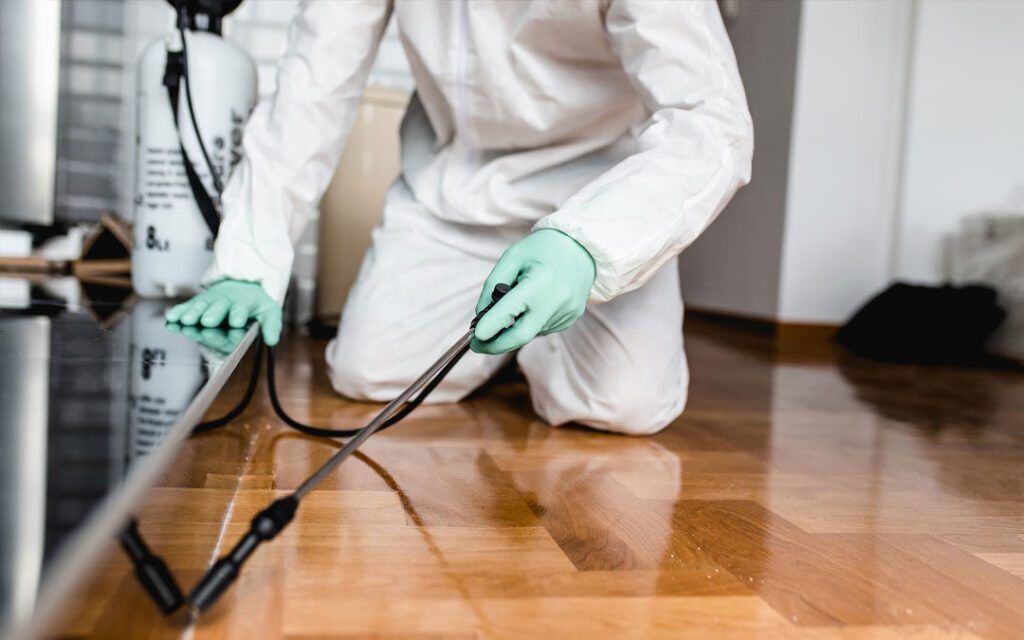Extermination Services for Chicago Apartments: Maintain Your Room Pest-Free
Extermination Services for Chicago Apartments: Maintain Your Room Pest-Free
Blog Article
A Comprehensive Overview to the Different Kinds Of Bug Control Techniques
With the myriad of bug control methods offered, it can be frustrating to discover the most reliable service for a details insect trouble. In this extensive overview, we will certainly check out these various kinds of insect control approaches, offering understandings right into their applications and benefits. By the end, you will have a more clear understanding of which method may be the finest fit for your parasite control needs.
Chemical Bug Control Approaches

One typical type of chemical pest control is pesticides. Pesticides target certain bugs, such as mosquitoes, termites, or ants, and can be used both indoors and outdoors.
One more type of chemical parasite control is rodenticides. These are chemical compounds developed to regulate populations of rodents, such as rats and computer mice.
Weed killers, also called herbicides, are one more kind of chemical bug control method. Herbicides are made to precisely eliminate unwanted plants, called weeds, without triggering harm to preferable plants. They are typically made use of in agriculture, landscape design, and gardening to regulate the growth of undesirable vegetation.
While chemical parasite control methods can be highly efficient in removing insects, it is very important to use them deliberately and adhere to security guidelines. Overuse or abuse of chemical pesticides can have adverse influence on human wellness and the setting. Consequently, it is vital to employ these approaches responsibly and think about alternate bug control techniques whenever feasible.
Organic Insect Control Approaches
Biological insect control techniques entail using living organisms or natural substances to manage and manage pest populaces. Unlike chemical approaches, which frequently rely upon artificial pesticides, biological control methods use the natural opponents of parasites to manage their populations. This method is thought about even more eco pleasant and lasting, as it reduces using damaging chemicals and lessens the danger of chemical resistance.
One commonly utilized organic pest control method is the intro of all-natural killers or bloodsuckers. Ladybugs are introduced to control aphids, while certain wasp species are released to target caterpillars. These killers and bloodsuckers eat bugs, minimizing their numbers and stopping infestations.
Another biological control approach is the usage of microorganisms. Specific bacteria, viruses, and fungi can be employed to contaminate and kill particular pests. For example, the bacterium Bacillus thuringiensis is commonly made use of to regulate caterpillars, as it creates toxins that are dangerous to these bugs.
Biological control methods can additionally include making use of scents or natural materials that interfere with the breeding patterns of bugs. By conflicting with their reproduction, these methods aid to reduce pest populaces over time.
While organic insect control approaches are typically effective, they might require longer durations to achieve preferred outcomes compared to chemical approaches. Furthermore, mindful consideration has to be provided to the option and release of all-natural enemies to avoid unintentional injury to useful microorganisms or environments.
Physical Pest Control Techniques
To successfully handle and control pest populaces, alternate insect control methods recognized as physical bug control methods are used. One more physical insect control approach is the setup of fences or wall surfaces to keep bigger bugs, such as deer or rabbits, out of yards or agricultural areas. Physical bug control methods are an eco friendly alternative to chemical pesticides, as they do not depend on the use of unsafe chemicals.
All-natural Insect Control Approaches
Natural parasite control techniques offer a lasting and green technique to managing and removing insects. These methods focus on making use of natural materials and biological representatives, reducing the demand for chemical pesticides that can hurt the environment and human health and wellness. One of the most usual natural parasite control techniques is organic control. This involves presenting natural killers or parasites to victimize or parasitize the pests. Ladybugs are frequently presented to yards to control aphid populations. One more all-natural method is making use of repellents stemmed from plants. Particular plants, such as marigolds, lavender, and pepper mint, give off fragrances that repel insects like mosquitoes, flies, and ants. In addition, social control methods can be used to stop and handle parasite infestations. This includes proper cleanliness, over here routine upkeep, and advertising biodiversity in the yard. As an example, rotating crops, removing garden particles, and encouraging all-natural predators can assist stop the buildup of pests. By adopting these natural pest control methods, individuals and communities can efficiently manage pests while reducing the negative influence on the setting and human wellness.
Integrated Parasite Monitoring (IPM)
Integrated Pest Administration (IPM) is a comprehensive and methodical strategy to pest control that combines numerous techniques and methods to effectively handle parasites while minimizing making use of chemical pesticides. IPM intends to maintain bug populaces below the economic injury level by using a mix of social, biological, and chemical control methods.
Social control approaches involve modifying the atmosphere to make it much less desirable for pests. This can include methods such as plant my sources turning, correct hygiene, and making use of resistant plant varieties. By producing undesirable problems for bugs, social control approaches can significantly decrease insect populations.

Chemical control approaches are utilized as you can try this out a last option in IPM. They involve the targeted and wise usage of pesticides to manage parasite populaces. Unlike conventional pest control approaches, IPM aims to reduce making use of chemical pesticides by using alternate techniques.
Integrated Parasite Administration (IPM) is a proactive strategy that concentrates on long-term pest monitoring rather than counting exclusively on reactive actions. By integrating numerous control techniques, IPM provides an extra sustainable and eco-friendly approach to pest control.
Verdict
To conclude, this article has provided a detailed overview of the various kinds of parasite control techniques. It discussed chemical, biological, physical, and all-natural insect control approaches, as well as the integrated parasite management technique. By understanding these different approaches, individuals can make educated decisions on which pest control technique is most ideal for their specific requirements and choices. Reliable pest control is vital in maintaining a healthy and pest-free atmosphere.
Report this page